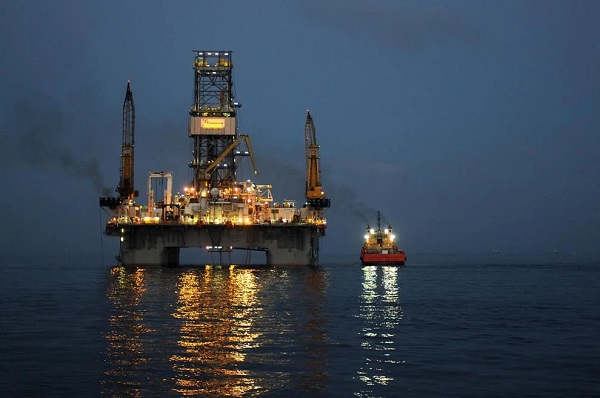Alberta
Proposed $70 billion AI data centre in MD of Greenview could launch an incredible new chapter for western Canadian energy

In case you missed it the other day, the Municipal District of Greenview, in west-central Alberta, announced some rather huge plans: to develop the “world’s largest AI Data Centre industrial Park”. The potential total value of the project could exceed a staggering $70 billion. This might, just might, be the tip of a big iceberg, because it shows the first indications that word is spreading about what some people have known for a while: there is no better place for these power-hungry data behemoths than the cold, relatively unpopulated, natural-gas-rich region of western Canada.
The announcement has garnered significant attention, which was awesome to see. The terms “AI data centre” and “$70 billion” will do that, and for good reason. AI is sweeping the world and no business or institution wants to be left behind. Furthermore, everyone wants them yesterday, and the challenge is where to put them all. It’s not easy finding the right place to plop something onto the grid within a few months that consumes the electricity of a small city, that doesn’t cause very problematic disruptions. We are in a power-short world, and this new entrant doesn’t really care. Which spells nothing but opportunity for power-rich regions.
Despite the positivity of the news release, it is important to keep our feet on the ground. Not meaning to be a buzzkill, here, but we shouldn’t fool ourselves that this will be easy. At any rate, here’s a quick run through the challenges, before getting to the more optimistic view. And in the spirit of Kevin O’Leary, I’ll let ‘er rip.
Mr. O’Leary is of course the driving force behind the Greenview AI project, which means that out of the chute it is going to be a colourful ride. He has dubbed himself “Mr. Wonderful” in an odd burst of mirth; the title is I guess supposed to be ironic because he, in his own words, courts controversy. He does seem to go out of his way to be provocative, with a certain Howard Stern-type shock-jock vibe that is not always helpful.
At least a few very bright people I’ve spoken to raise their eyebrows when they hear that Mr. O’Leary is leading this charge (he has even dubbed the location “Wonder Valley”, presumably a play on his chosen nickname, which comes across a bit like a tinpot dictator putting up a huge statue of himself). His business chatter is often mostly a lot of shouting, a lot of feathers but not much chicken; he is an astute businessman but seems to take delight in boisterous battles or boasts that cause people to think otherwise. In a recent BNN interview this past summer, he mused that he would buy TikTok (“I will be the buyer, I think”), which is a bit of an astonishing claim, considering that later in the conversation he went on to talk about his investment in a cupcake-in-a-jar business, which sounds fun, but does not enhance his Renaissance-man-style, nor when talking about executing 70 billion dollar projects. His focus is, to put it mildly, rather wild-eyed.
He is not a stranger to data centers, but even then his low polar moment of inertia leads to some serious longitudinal instability (oops, too much F1 lately). At the 2022 “Montana on the Rise Economic Summit”, he spoke extensively of data centers, concluding that data centers would be built “right here in Montana” because of the clean power attributes, and abundance of space and water. He went on to say that he would only place data centers (he does invest in them) where he requires “policy that he can see at least 7 years ahead.” When he invests in data centers, per his speech, what matters are two parameters: “the source of energy and the stability of the policy and the tax regime.” Regarding energy sources, he talked about Montana’s zero-carbon power sources as being key to this Montana vision of his. His statement was clear: clean power was the key to Montana data center development, from hydro, wind, nuclear. He introduced four speakers that each spoke of the clean power that was pretty much a prerequisite.
But now here he is leading the charge into Canada, which is a great omen possibly, more on that in a second, but it does fly in the face of what he said two years ago. In fact, not just two years ago but even earlier this year he was lamenting that Canada was un-investable. Here is another batch of sound bites from Mr. O’Leary from March 2024, where he vigorously follows up on his requirement for 7 clear years of policy vision: Canada is “run by complete idiots…Canada should have at least five of them [data centers]. There are none of them going on right now because you can’t get energy permits…you wouldn’t waste your time trying to go through the regulatory process of getting a permit issued…No one is going to risk capital there. You cannot get anything done in Canada, not in mining, not in data centers, not in anything to do with the federal government…”
Furthermore, as he ascertains, the challenges will be considerable. He was not wrong in his assessment of Canada’s challenging investment climate, and anyone involved in building anything in Canada can spill yarns until the cows come home about the endless challenges.
You wouldn’t know this by looking at the Wonder Valley website. It is somewhat different than the norm for this type of thing, in Canada – some entities that I am in touch with are attempting to build such projects, but are doing it the hard way – doing as much legwork as possible before making a big public statement, because of the considerable uncertainty. Mr. O’Leary has chosen a different tack, including creating a minute-long AI video of a dreamy forest landscape with prancing deer and pristine buildings, to go with his wonderful name, and anyone with any project development experience up here is well aware of the challenges that are being visually swept under the rug. It makes one wonder just where the project is at in the planning timeline, because the peacock feathers need to be affixed to something substantial, or they’re all just for show. And that’s where this project has an aura of haziness, because anyone that builds anything knows the flash is the easy part.
OK, that was the bad news. And it’s no surprise, we all know he is flamboyantly combative and blustery. But that’s not the end of the story.
Now let’s look at the good. And it could be very good indeed.
Regardless of the antics chronicled above, the fact remains that Mr. O’Leary is a very successful businessman, wh0 does not run from a challenge. There are also numerous reasons why he might just make this all happen despite his historical comments on the topic.
First off, Mr. O’Leary, like everyone else, no doubt has a different view of data centers than from 2022. The whole world has exploded in AI demand in just the past 12 months. So we can easily forgive him for that change of heart, including his adaptation to welcome natural gas. Given the current demand for AI services over the next few years, there is no other way.
Then Mr. O’Leary spoke of Canada being un-investable because of Ottawa. He’s not crazy there, I would agree completely. But the good news is that perhaps the winds of change are blowing so hard that investors might be willing to start placing bets that the era of insane governance in Canada is nearing the end. That would be a very good sign, because this country will continue to sink as long as the current regime keeps flexing in ways that terrify any investor that isn’t building a battery plant or other albatross with the fed’s $.
The last part of the good news equation is that Mr. O’Leary is publicizing something that is exactly right. From the Greenview/O’Leary news release: “Given existing permits, proximity to stranded sources of natural gas, pipeline infrastructure, water and a fiber optic network within just a few kilometers of the Greenview Industrial Gateway, we will be in the ground and up and running sooner than any scale project of its kind… The GIG’s ideal cold-weather climate, a highly skilled labor force, Alberta’s pro-business policies and attractive tax regime make the GIG the perfect site for this project.” Mr. O’Leary has not forgotten the carbon-free angle, noting that geothermal energy is under development in the region as well. And finally, the project, according to the news release, promises a positive relationship with First Nations, a cornerstone of any future large-scale industrial construction in any part of Canada that is not a major city.
Behind the regulatory woes, the tools required to make this project a success are mostly there. The energy sector has a formidable ability to get things done, with a strong, motivated workforce, world-class talent, and legendary enthusiasm. The dynamism of the sector has drawn young people from across the country for decades.
Thanks to the enthusiasm of producers, we are also blessed with many decades of reasonably priced natural gas; we are capable of producing far more than can find a home via pipe. If ever there was a poster child for “in-basin demand”, this is it. The infrastructure is there, the gas is there, the construction talent is there, the fiber optic linkages are there…it’s quite a list of assets.
Those of us watching the energy industry from the inside have known since the topic went viral that inland western Canada possesses everything necessary to successfully host massive AI data center developments. The challenge has been the vast, thick wet blanket of regulatory strangulation and business animosity that has grown like a weed across the country.
If it takes a bombastic guy like Kevin O’Leary to punch through that mess and start the first wave of what could be a very large infusion of capital into Canada, then so be it and I welcome his project and even him with open arms. Furthermore, I’m sure nothing drives him forward like being told he will not accomplish something.
And to be very clear on the point: Mr. O’Leary is an entrepreneurial guy who gets things done. That is exactly what we need more of in Canada. Or rather, we have lots of those types, but they’ve been demoralized for a decade by the current political and regulatory environment that actively dislikes the hydrocarbon sector. Maybe exactly what we need is someone larger than life to kickstart things. We do know that the demand for AI data centers seems insatiable, and once the trail is blazed for new, co-located projects, perhaps many more will rapidly follow.
Mr. O’Leary, wishing you all the best and I will gladly print and eat this column at your convenience (I get to choose font) should you bring Wonder Valley to life. If you do, it could be the cornerstone for a whole new industry up here, and the benefits to Canada will be glorious.
It’s all happening as expected, more or less – an energy transition isn’t quite so simple. Find out what readers knew years ago in The End of Fossil Fuel Insanity – the energy story for those that don’t live it, and want to find out. And laugh. Available at Amazon.ca, Indigo.ca, or Amazon.com.
Read more insightful analysis from Terry Etam here, or email Terry here.
Alberta
Alberta takes big step towards shorter wait times and higher quality health care

From the Fraser Institute
On Monday, the Smith government announced that beginning next year it will change the way it funds surgeries in Alberta. This is a big step towards unlocking the ability of Alberta’s health-care system to provide more, better and faster services for the same or possibly fewer dollars.
To understand the significance of this change, you must understand the consequences of the current (and outdated) approach.
Currently, the Alberta government pays a lump sum of money to hospitals each year. Consequently, hospitals perceive patients as a drain on their budgets. From the hospital’s perspective, there’s little financial incentive to serve more patients, operate more efficiently and provide superior quality services.
Consider what would happen if your local grocery store received a giant bag of money each year to feed people. The number of items would quickly decline to whatever was most convenient for the store to provide. (Have a favourite cereal? Too bad.) Store hours would become less convenient for customers, alongside a general decline in overall service. This type of grocery store, like an Alberta hospital, is actually financially better off (that is, it saves money) if you go elsewhere.
The Smith government plans to flip this entire system on its head, to the benefit of patients and taxpayers. Instead of handing out bags of money each year to providers, the new system—known as “activity-based funding”—will pay health-care providers for each patient they treat, based on the patient’s particular condition and important factors that may add complexity or cost to their care.
This turns patients from a drain on budgets into a source of additional revenue. The result, as has been demonstrated in other universal health-care systems worldwide, is more services delivered using existing health-care infrastructure, lower wait times, improved quality of care, improved access to medical technologies, and less waste.
In other words, Albertans will receive far better value from their health-care system, which is currently among the most expensive in the world. And relief can’t come soon enough—for example, last year in Alberta the median wait time for orthopedic surgeries including hip and knee replacements was 66.8 weeks.
The naysayers argue this approach will undermine the province’s universal system and hurt patients. But by allowing a spectrum of providers to compete for the delivery of quality care, Alberta will follow the lead of other more successful universal health-care systems in countries such as Australia, Germany, the Netherlands and Switzerland and create greater accountability for hospitals and other health-care providers. Taxpayers will get a much better picture of what they’re paying for and how much they pay.
Again, Alberta is not exploring an untested policy. Almost every other developed country with universal health care uses some form of “activity-based funding” for hospital and surgical care. And remember, we already spend more on health care than our counterparts in nearly all of these countries yet endure longer wait times and poorer access to services generally, in part because of how we pay for surgical care.
While the devil is always in the details, and while it’s still possible for the Alberta government to get this wrong, Monday’s announcement is a big step in the right direction. A funding model that puts patients first will get Albertans more of the high-quality health care they already pay for in a timelier fashion. And provide to other provinces an example of bold health-care reform.
Alberta
Alberta’s embrace of activity-based funding is great news for patients

 From the Montreal Economic Institute
From the Montreal Economic Institute
Alberta’s move to fund acute care services through activity-based funding follows best practices internationally, points out an MEI researcher following an announcement made by Premier Danielle Smith earlier today.
“For too long, the way hospitals were funded in Alberta incentivized treating fewer patients, contributing to our long wait times,” explains Krystle Wittevrongel, director of research at the MEI. “International experience has shown that, with the proper funding models in place, health systems become more efficient to the benefit of patients.”
Currently, Alberta’s hospitals are financed under a system called “global budgeting.” This involves allocating a pre-set amount of funding to pay for a specific number of services based on previous years’ budgets.
Under the government’s newly proposed funding system, hospitals receive a fixed payment for each treatment delivered.
An Economic Note published by the MEI last year showed that Quebec’s gradual adoption of activity-based funding led to higher productivity and lower costs in the province’s health system.
Notably, the province observed that the per-procedure cost of MRIs fell by four per cent as the number of procedures performed increased by 22 per cent.
In the radiology and oncology sector, it observed productivity increases of 26 per cent while procedure costs decreased by seven per cent.
“Being able to perform more surgeries, at lower costs, and within shorter timelines is exactly what Alberta’s patients need, and Premier Smith understands that,” continued Mrs. Wittevrongel. “Today’s announcement is a good first step, and we look forward to seeing a successful roll-out once appropriate funding levels per procedure are set.”
The governments expects to roll-out this new funding model for select procedures starting in 2026.
* * *
The MEI is an independent public policy think tank with offices in Montreal, Ottawa, and Calgary. Through its publications, media appearances, and advisory services to policymakers, the MEI stimulates public policy debate and reforms based on sound economics and entrepreneurship.
-

 2025 Federal Election2 days ago
2025 Federal Election2 days agoRCMP memo warns of Chinese interference on Canadian university campuses to affect election
-

 2025 Federal Election1 day ago
2025 Federal Election1 day agoResearchers Link China’s Intelligence and Elite Influence Arms to B.C. Government, Liberal Party, and Trudeau-Appointed Senator
-

 2025 Federal Election1 day ago
2025 Federal Election1 day agoCarney needs to cancel gun ban and buyback
-
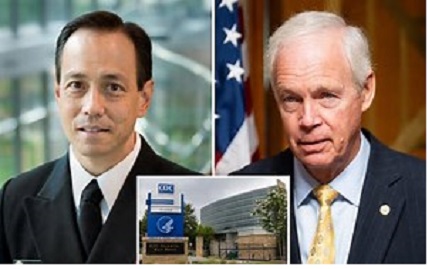
 COVID-1918 hours ago
COVID-1918 hours agoCDC Vaccine Safety Director May Have Destroyed Records, Says Sen. Ron Johnson
-
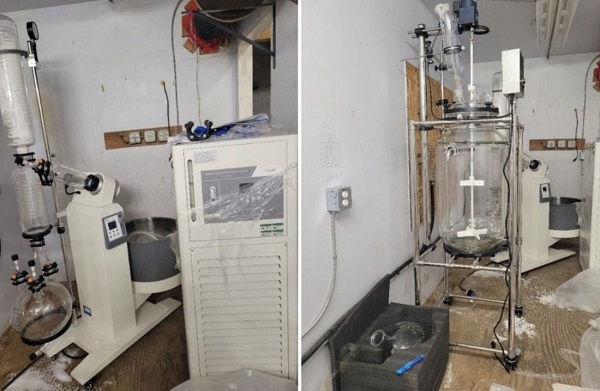
 Business17 hours ago
Business17 hours agoCanadian Police Raid Sophisticated Vancouver Fentanyl Labs, But Insist Millions of Pills Not Destined for U.S.
-
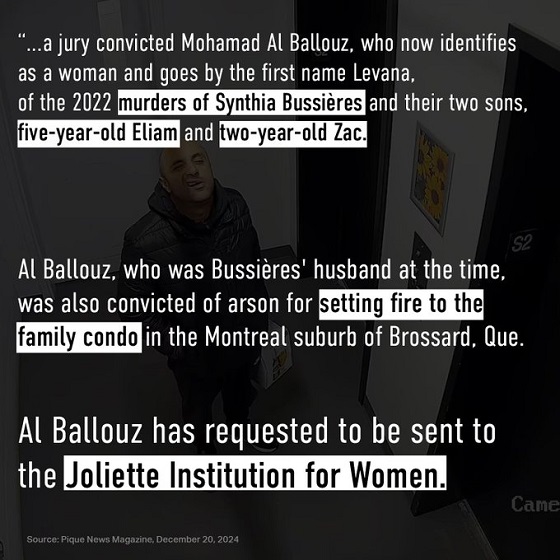
 2025 Federal Election8 hours ago
2025 Federal Election8 hours ago‘Sadistic’ Canadian murderer claiming to be woman denied transfer to female prison
-
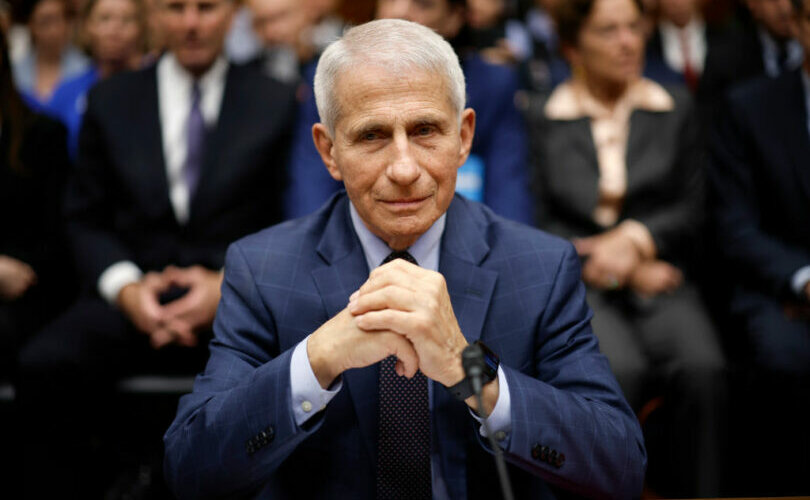
 COVID-191 day ago
COVID-191 day agoFauci, top COVID officials have criminal referral requests filed against them in 7 states
-

 2025 Federal Election1 day ago
2025 Federal Election1 day agoTwo Canadian police unions endorse Pierre Poilievre for PM









